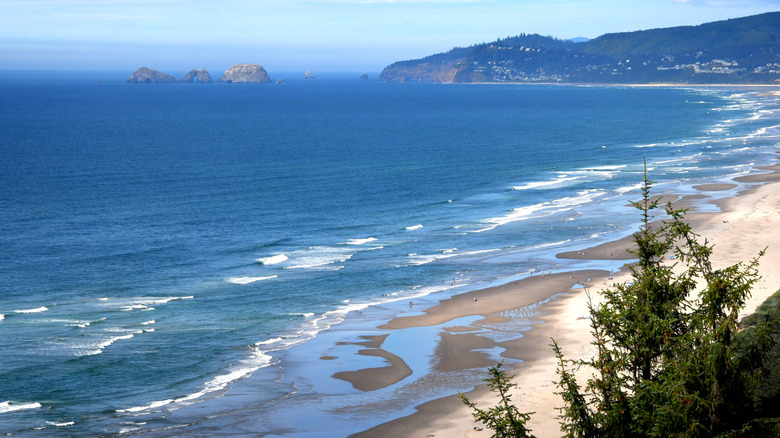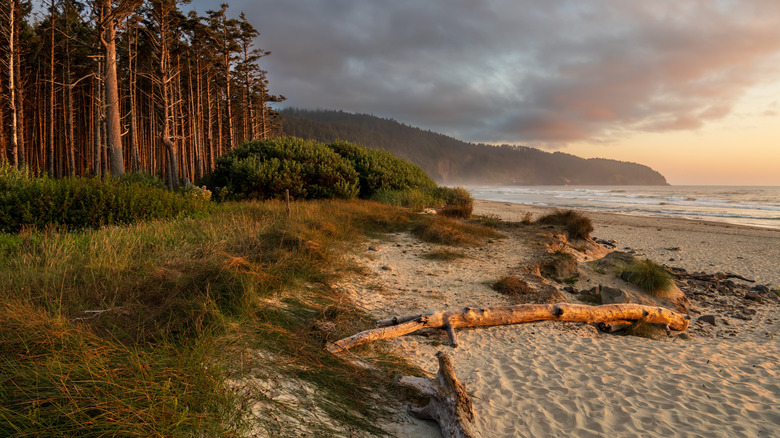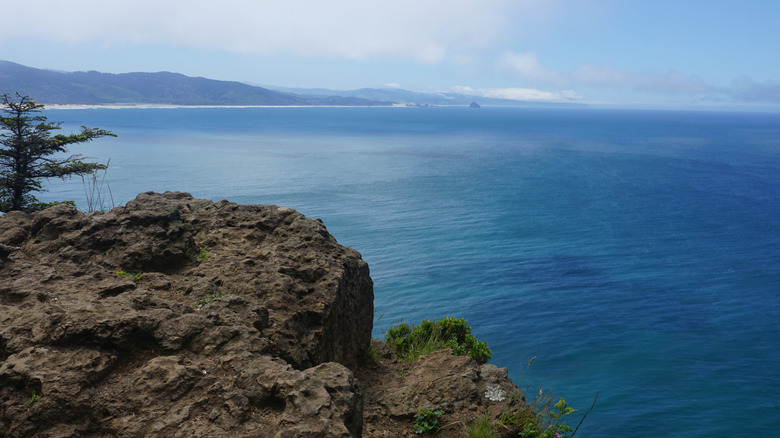Tucked Between Misty Oregon Cliffs And Ancient Trees Is A Dreamy Cape Escape With Year-Round Camping
Give Oregon some credit: the state knows how to do coastal adventure right. Its 363 miles of shoreline produce some of the country's most arresting seaside destinations. The resulting feast leaves outdoor adventurers with a dilemma; namely, choosing one destination means skipping another. There's Fort Stevens State Park, with sandy shores and historic hikes and some of Oregon's best campsites, or Rockaway Beach, a cute beach city with sleepy vibes and quaint shops. But Beaver State-bound visitors should consider punching Cape Lookout State Park into their GPS if they want to camp in a dreamy cape escape surrounded by ancient trees and tucked between misty cliffs.
Travelers should head there fast, as summer 2025 is the last chance at camping before the park closes for major construction work in the fall, though the park will reopen for year-round use in summer 2026 at the latest. Resting on a sand spit between the ocean and a cape, erosion and seawater are jeopardizing the existing campground infrastructure, a problem that tells you as much about the campgrounds' proximity to the water as it does about the water's ceaseless power. The thrashing hum of the ocean along the state park's three-mile-long beach provides the soundtrack to time spent at the shore-adjacent campgrounds and day-use areas. In short, you can leave the white noise machine at home.
Roam the trails and see some whales
Hiking presents the best chance to experience all of Cape Lookout's offerings. Over eight miles of trails zigzag along the park's shore. While hitting the trails, you can also beachcomb for shells or keep your eyes peeled for whales and glass floats in the water. The various viewpoints along the way offer an unobstructed, arresting view of the ocean, with old-growth hemlocks and spruces along the way. Roaming among such ancient giants can lead you to find all sorts of treasure. Some trails also follow the misty cliffs overlooking the shore, which can be shrouded in fog. In fact, the cover sometimes becomes too dense, as exhibited in 1943, when a B-17 bomber crashed into the 800-foot-high cliffs.
The dramatic views of the coast and steep drop-offs at stops like the Wells Cove Lookout create a sense of grandeur and awe. Going beyond that point, though, will be a dicey proposition. Trails become muddy, and the odds of surviving a fall decrease, so it's best to play it safe. The routes vary in length but won't wear out your boots, ranging from a five-mile round trip to a family-friendly stroll. If you're hoping for a beach day instead of hiking, make sure you can keep your balance. A large revetment, designed to prevent erosion, separates the cape from the ocean and must be crossed to reach the water.
Where to stay and how to get there
Cape Lookout lies about 90 minutes to the west of Portland, which should be your landing spot if you're flying in. From there, you can incorporate Cape Lookout State Park into a road trip visiting all of the state's "seven wonders." It's a good move to bring a little more cash than you might expect, as Oregon state parks recently got more expensive.
When looking for places to stay, your most logical option is the park itself. Cape Lookout offers a smorgasbord of camping options, 230 in total, with sites that range from full hookups suited for an RV to tent sites and even pet-friendly yurts. Those looking for a bit more comfort can book one of Cape Lookout's deluxe cabins. Bring all your requisite camping gear, sunblock, a camera, and swimming gear if you plan on taking a dip. Keep in mind that black bears roam Oregon's coast, so be sure to pack bear spray. If you want to spot whales while you're there, bring a strong pair of binoculars and all the patience you can muster.


